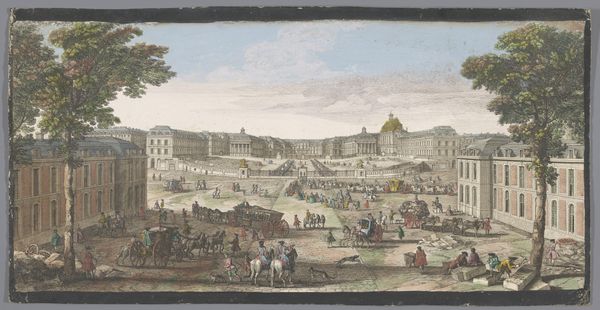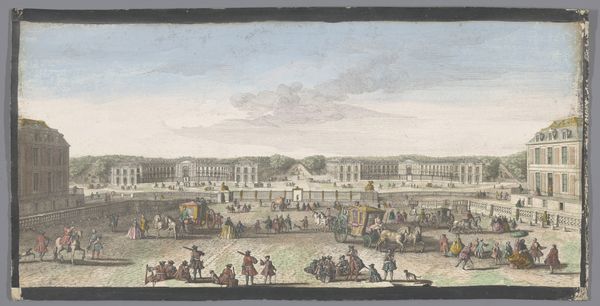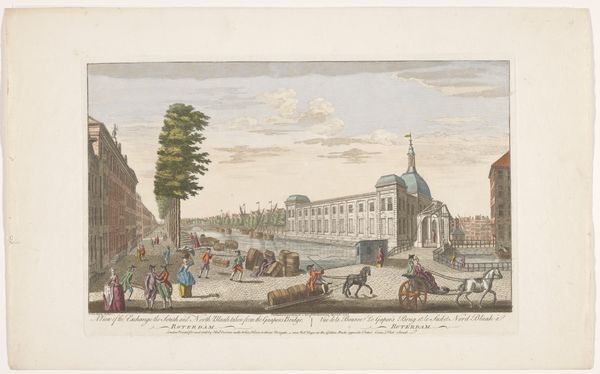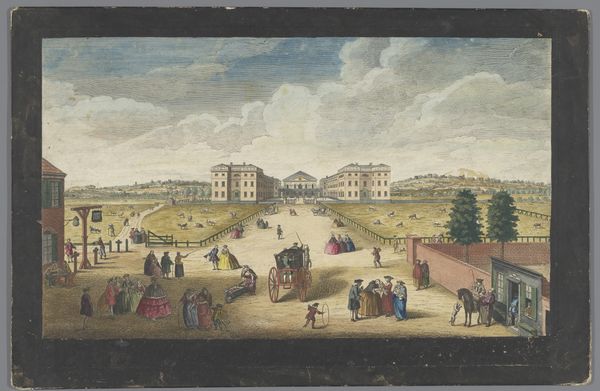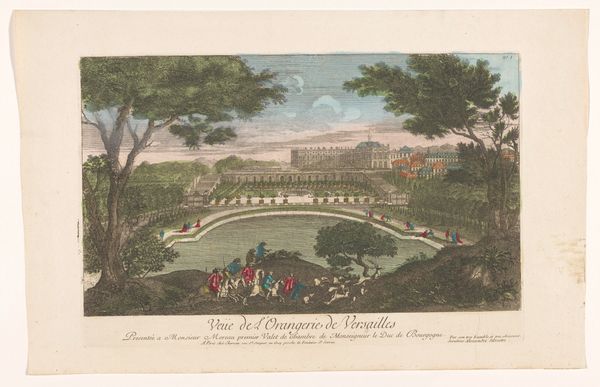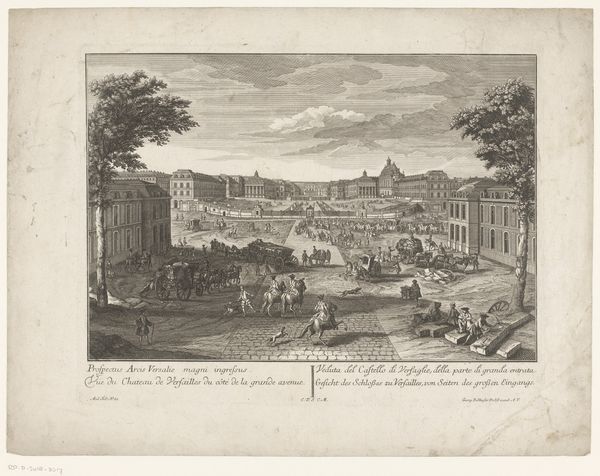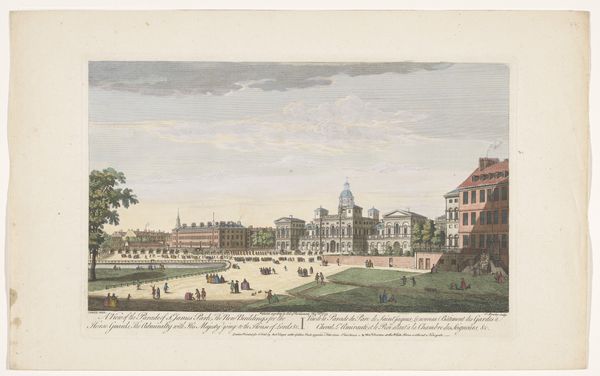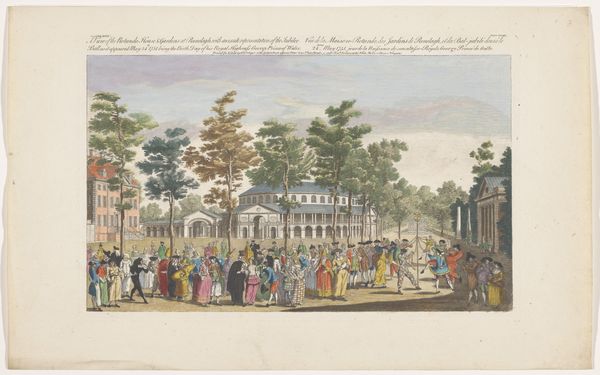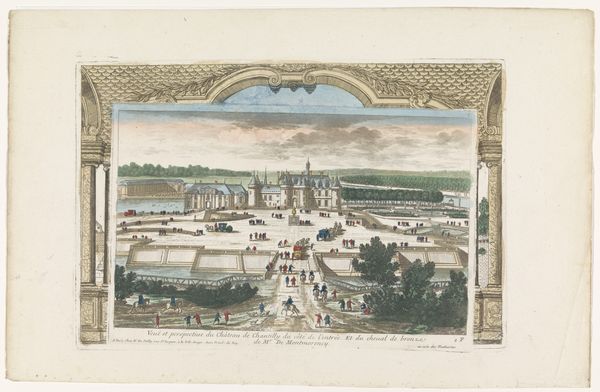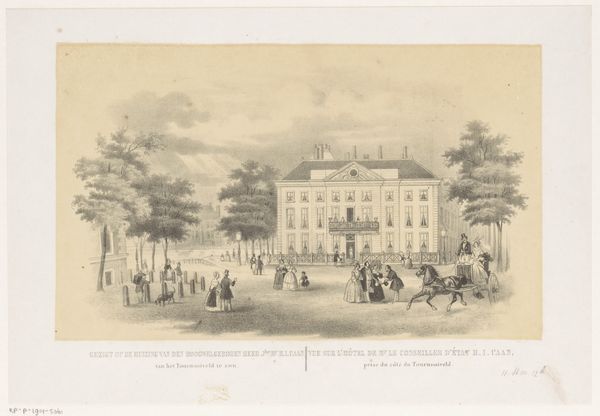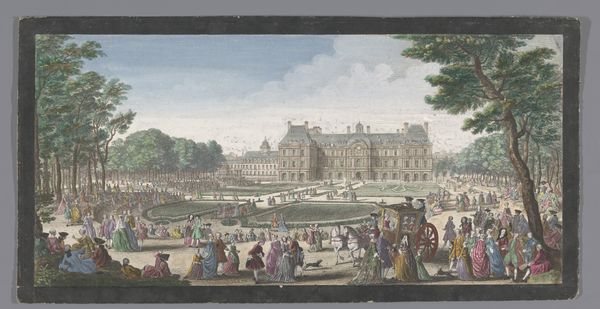
print, watercolor
# print
#
landscape
#
watercolor
#
cityscape
#
watercolour illustration
#
watercolor
#
rococo
Dimensions: height 248 mm, width 412 mm
Copyright: Rijks Museum: Open Domain
Curator: Oh, this piece, titled “View of the Forefront of the Palace of Versailles,” attributed to John Tinney sometime between 1700 and 1761, gives me the giggles, almost. It’s so…orderly! Editor: Orderly to a fault, one might argue. What strikes me immediately is how this composition is a powerful assertion of royal authority communicated through landscape. Curator: Absolutely, and that’s where my giggle comes from. It's almost like an architect's wet dream of perfect symmetry! The eye just zooms to that central dome. And the human figures? They’re like decorative afterthoughts. Though, I suppose they underscore that this grandeur comes at the expense of somebody else’s labor. Editor: Indeed, the palace becomes a stage, a backdrop for the performative aspects of power. But I'd argue those figures aren't mere afterthoughts; they are meticulously placed. Note the hierarchy, with the nobility parading in carriages while others toil on foot. It reveals a society structured on inequality. How do you interpret the use of watercolor in a context so entrenched with displays of wealth? Curator: You know, at first, I found it… unexpected? Watercolor seems so gentle for something so monumental. Almost a wink and a nudge! Like, "Oh, it's *just* a palace," but also...the very airiness, the delicate washes of color. It suggests ephemerality. Empires rise, empires fall, and all that jazz. Editor: Precisely! The softness of the watercolor subverts the imposing architecture, suggesting instability even within grandeur. Consider also that it may offer insight into a changing Europe as monarchies began yielding to revolution and emerging democratic ideas. This visual gentleness subtly speaks to shifts in power. Curator: And all that is packed into what feels, initially, like a simple architectural portrait. The mind does somersaults! And thinking of that historical context makes it all the more resonant. Suddenly, that 'order' starts feeling brittle. Editor: Right? We begin to realize Versailles isn't just bricks and mortar, but a symbol ripe for deconstruction. Even this image, made using prints and watercolors, bears witness to shifting perspectives on power. Curator: It becomes an artifact that transcends simply its face value of a city scene. It gives me all the feels... Editor: Absolutely. It layers complexity on top of its first appearance.
Comments
No comments
Be the first to comment and join the conversation on the ultimate creative platform.
